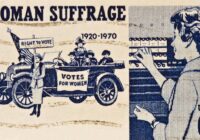Contemporary romance novels are big business, and they empower women in a number of ways. In the United States alone, romance novels account for about one third of the fiction market, about the same as mystery and fantasies combined. The vast majority of romance writers are women, and so are their readers — at around 80%, they amount to some 40 million readers.
For ages, romance novels have been subjected to ridicule and derision, contemptuously dismissed as “chic lit” and “cliterature.” In recent years, however, this has (somewhat) changed. One important turning point was the hiring of Jaime Green as romance fiction columnist for The New York Times in 2018. This was arguably a result of the negative response the paper had received one year earlier to a male critic’s review of romance novels — and to the publication’s defense of it — both of which one reader characterized as “absolutely appalling,” “incredibly offensive” and “out of touch.”
The comment might seem a bit harsh and slightly overstepping the mark. Yet essentially it is right on target. Today’s romance novels are a far cry from the Harlequin novels of times past — and even this might be a mischaracterization of Harlequin fiction — or the German Bastei Ärzteromane (doctor novels) my parents’ generation read in the postwar period. Today’s romance novel heroines are no longer the passive one-dimensional cookie-cutter fairy princess-like figures waiting for their prince charming in white scrubs.
This is not to say that the latter don’t exist. The genre abounds with millionaires and particularly billionaires (who would have thought the US has so many of them, and all of them so young and stunningly good-looking?), rock stars, top hockey, football and even soccer players — and, yes, doctors and surgeons.
Ordinary “working-class” men are relatively rare — no wonder given the rapidly diminishing prospects of working-class males — but they do exist, predominantly as rugged motorcycle club members, titillating tattoo artists or “panty-droppingly” beautiful male escorts. But, then, the genre is not primarily about men and their insecurities and hang-ups, but about the women who fall in love with them, who give them a second chance when they screw up — and they certainly do more often than not — who tell them off in no uncertain terms and put them in their place.
New Feminist Reading
A few years ago, Maya Rodale, author of “Dangerous Books for Girls: The Bad Reputation of Romance Novels Explained,” claimed in the Huffington Post that romance novels empower women. She should know, being a successful romance author herself, whose books have routinely graced the bestseller lists. Her statement might, however, come as somewhat of a surprise, even a shock. After all, even avid readers of romance novels more often than not feel apologetic about reading “these books” that don’t make for the “most intelligent reading.”
And yet, romance novels have a massive following, particularly in the United States, but not only there. You can find them, translated into French, at Carrerfour in provincial France, or into German at Press & Books in Swiss train stations, and on Amazon in India — and for good reason.
Maya Rodale has maintained that romance novels are those “dangerous books for girls that show women again and again that they’re worth it;” where “women’s voices predominantly shape the narrative about themselves in the world;” and where “real, good love doesn’t ask you to lose weight, change your hair, get a different job, silence your feelings or in some way shrink yourself to fit into a box society has labeled ‘desirable.’”
What this suggests is that romance novels play a role similar to what has been claimed for some contemporary Latin American telenovelas. Instead of presenting women in a submissive role, they empower them. As a major (male) Mexican telenovela star has put it, “Female characters are presented how they truly are in Mexico and Latin America. Nowadays, women decide themselves and are fighters with strong values. Women play important roles in culture and their opinions are taken into account.”
Even Hallmark, once a bastion of white coy heterosexual holiday schmaltz, has cautiously started to go with the times, increasingly, if reluctantly, “portraying women who have options and who make their own choices about work and love” and, in the process, advancing “a subtle feminist message.”
Against that, contemporary romance novels are anything but subtle, particularly with respect to the one thing that is unique to the genre – its blatant sexuality. Some 30 years ago, Ann Douglas, a professor of English at Columbia University, characterized Harlequin novels as “porn softened to fit the needs of female emotionality.” Today, “female emotionality” has fundamentally changed. At the time, Douglas characterized John Cleland’s 1749 erotic classic, “Fanny Hill” as a “hard-porn” story of an innocent, naive country girl turned into a “woman of pleasure.”
If this is true, then virtually all contemporary romance novels are hardcore porn, often going far beyond “Fanny Hill.” The New York Times bestselling authors such as Helena Hunting, Sawyer Bennett or Jana Aston have not only mastered the art of writing steamy sex scenes — they have also paved the way for the myriad writers inspired by them to drop any pretense of false modesty and call a spade a spade.
At the time, “Fanny Hill” caused outrage, was proscribed, forced underground, but never successfully suppressed. Ironically enough, the novel ultimately is a moral story. The heroine might love sex, might be “hooked on sexual pleasure” which “she pursued with abandon and elan.” Yet at the end, Fanny Hill comes to discover “that true sexual fulfilment can only be found within the confines of marriage.”
End of Men
“Fanny Hill” was written by a man. It is a man’s phantasy. Today’s romance novels are predominately written by women, and, as such, they presumably are an expression of women’s phantasies. Yet they as often follow the plot line that informed “Fanny Hill” as they do the lead of that other great romance novel, Jane Austen’s “Pride and Prejudice.”
To be sure, true sexual fulfillment is no longer confined to the realm of married life, which is hardly surprising given today’s divorce rate. Yet neither is it relegated to serendipitous fleeting encounters. In fact, more often than not, hook-ups and one-night stands mark sensual turning points that awaken pent up but unmet desires that, once fulfilled, invariably lead to love, commitment and the “happily ever after.”
Ten years ago, Hannan Rosin, writing for The Atlantic, heralded the “end of men.” The advance of a modern postindustrial economy, or so Rosin argued, was simply more “congenial” to women than to men. “As thinking and communicating have come to eclipse physical strength and stamina as the keys to economic success,” women were no longer at a disadvantage compared to men.
Most commercially successful romance novels do their part to advance this cause. They demonstrate, without being preachy, that it is possible for a man and a woman to be equals, sexually as well as intellectually.
On the contrary: The Great Recession brutally demonstrated to what degree men had become structurally expendable in the work force. Of the 8 million jobs lost as a result of the financial crisis, the vast majority were in industries that were “overwhelmingly male and deeply identified with macho: construction, manufacturing, high finance.”
In the years that followed, prospects have hardly improved for men. In fact, in 2017 three leading trade economists published a paper analyzing the diminishing “marriage-market value of young men” caused by the decline in American manufacturing.
The anxieties, resentment and anguish provoked by these developments among a proportion of white American males have been identified as one of the main factors behind the election of Donald Trump. Trump’s open contempt for women — together with his unwavering support for diehard misogynists such as the US Senate hopeful Roy Moore — partially explains his appeal among these segments of the electorate that see themselves as victims and losers, their masculine identity threatened.
Trump’s lashing out against strong women leaders and his relentless attacks on young women lawmakers soothe their lacerated egos while fanning the flames of nostalgia for those good old days of “Leave It to Beaver” when women still looked up to their husbands and contented themselves with keeping an immaculate home.
Subversive Potential
Under these circumstances, contemporary romance novels can no longer be dismissed as mere shallow entertainment. Rather, they should be recognized for their subversive potential — as narratives of resistance to the prevailing climate of misogyny and anti-genderism informed by a Trumpist desire to reaffirm and reestablish (white) male dominance and privilege as part of the “natural order.”
To be sure, romance novels are hardly innovative literature. They follow a rather predictable script intrinsic to the genre, starting from “Pride and Prejudice” to contemporary Hallmark and Bollywood movies. They invoke certain tropes, stereotypes and clichés associated with the “male gaze” and turn them around, with a strong dose of objectification. Only this time, the object of desire is the man: his firm and tall body, ripped abs, hard butt, tattoos. This in itself has a subversive potential.
As Katherine Lampe has noted in a blog with the telling title, “Writing the Female Gaze,” “women have sexual desires and urges. Women look at men they find attractive.” However, when women act upon their sexual attractions and desires, they get stigmatized, ostracized and punished. Women, as well as fictional female characters, are expected “to behave certain ways around sex, to be the one acted upon rather than the actor. A woman who’s up front about her sexuality, who picks and chooses and directs instead of going along, is a challenge to our self concepts and our own relationships with carnality.” And this includes women, as Lampe herself learned from women’s responses to the way she depicted the heroine of her novels. These comments showed her that “we have a long way to go before women’s points of view become normal and women’s sexuality, in all its many forms, becomes as acceptable as men’s.”
Most commercially successful romance novels do their part to advance this cause. They demonstrate, without being preachy, that it is possible for a man and a woman to be equals, sexually as well as intellectually. They show that vulnerability is not a flaw — not even for a powerful man. And they demonstrate over and over again that the secret to a fulfilled relationship is the ability to communicate on an equal footing, with mutual respect and appreciation, without one side seeking to impose his or her will on the other. In today’s testosterone-laden world, headed by a commander-in-chief who takes pride in being a pussy grabber, this is no small feat.
If this is true, romance novels are indeed subversive weapons against the relentless assault of the contemporary misogynistic right, fed by a combination of anxiety and contempt, and, ultimately, the objective of restoring the subordination of women. They have the potential, given a readership that goes into the millions, to empower more women than any feminist academic article could ever do. Similar to what has been observed with respect to telenovelas in developing countries, they can have a “profound emancipating impact” on their readers. Particularly younger readers appear to recognize that “romance novels do embody feminist ideals.”
Empowerment, however, is not a one-way street. Unfortunately, romance novels remain, to an overwhelming degree, the domain of women readers. Recent surveys suggest that their readership among males is increasing, albeit slowly and hardly substantially. Given the structural power of men, as long as romance novels continue to fail to appeal to male readers, they will fall short of their subversive potential.
The views expressed in this article are the author’s own and do not necessarily reflect Fair Observer’s editorial policy.
Support Fair Observer
We rely on your support for our independence, diversity and quality.
For more than 10 years, Fair Observer has been free, fair and independent. No billionaire owns us, no advertisers control us. We are a reader-supported nonprofit. Unlike many other publications, we keep our content free for readers regardless of where they live or whether they can afford to pay. We have no paywalls and no ads.
In the post-truth era of fake news, echo chambers and filter bubbles, we publish a plurality of perspectives from around the world. Anyone can publish with us, but everyone goes through a rigorous editorial process. So, you get fact-checked, well-reasoned content instead of noise.
We publish 2,500+ voices from 90+ countries. We also conduct education and training programs
on subjects ranging from digital media and journalism to writing and critical thinking. This
doesn’t come cheap. Servers, editors, trainers and web developers cost
money.
Please consider supporting us on a regular basis as a recurring donor or a
sustaining member.
Will you support FO’s journalism?
We rely on your support for our independence, diversity and quality.






